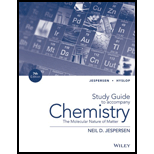
Concept explainers
Interpretation:
The IUPAC (International Union of Pure and Applied Chemistry) names of the given compounds are to be written.
Concept Information:
International Union of Pure and Applied Chemistry is abbreviated as IUPAC.
It is a standard naming system for all organic and inorganic compounds.
Hydrocarbons are compounds containing carbon
An organic compound has three basic parts while inorganic compounds have two basic parts for naming of compounds.
General rules for
•Recognize the functional group in the compound to determine the suffix of the name like, -ane for
•Find the longest continuous carbon chain that contains the functional group and count the number of carbon atoms in this chain to determine the prefix of the compound name like, Meth- for single carbon, eth- for 2 carbon chain, prop- for 3 carbon chain, etc.
•Number the carbons in the longest carbon chain by stating with the carbon at the end closest to the functional group.
•Look for any branched groups, name them and assign the number of the carbon atom to which the group is attached like 2,4-.
Want to see the full answer?
Check out a sample textbook solution
Chapter 22 Solutions
Study Guide To Accompany Chemistry: The Molecular Nature Of Matter, 7e

 Introductory Chemistry: An Active Learning Approa...ChemistryISBN:9781305079250Author:Mark S. Cracolice, Ed PetersPublisher:Cengage Learning
Introductory Chemistry: An Active Learning Approa...ChemistryISBN:9781305079250Author:Mark S. Cracolice, Ed PetersPublisher:Cengage Learning


